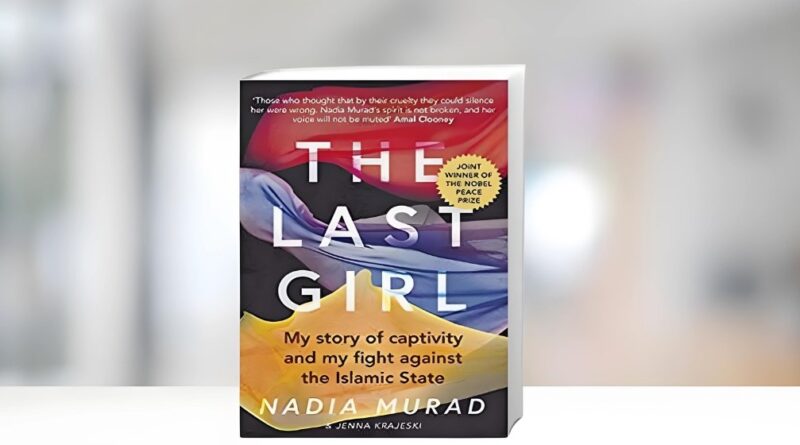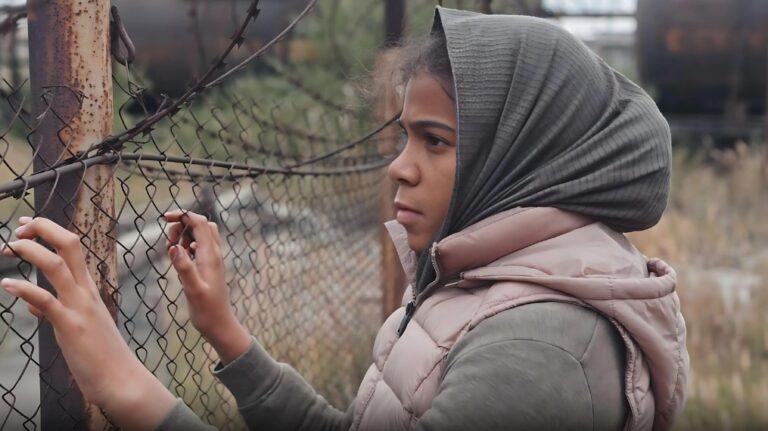“The Last Girl” is a compelling and heart-wrenching memoir by Nadia Murad, detailing her traumatic experiences under ISIS captivity. At 21 years old, Nadia was living in Kocho, a small Yazidi town in Iraq, and was close to finishing high school when her community came under brutal attack by ISIS. The extremist group’s main objective was the eradication of the Yazidi people, killing those who resisted conversion and abducting others for heinous purposes.
Nadia recounts how her village attempted to escape to Mount Sinjar but was ultimately captured. The militants separated the men and older women from the others, leading them away to be executed, a fate that befell Nadia’s mother and all six of her brothers. The younger women and children were transported to Mosul, destined for a grim fate as sex slaves. Nadia describes the horrifying journey and her initial encounters with sexual violence, a harrowing prelude to her subsequent suffering in Mosul.
While in Mosul, Nadia Murad faced unimaginable horrors. She was sold multiple times and subjected to continual sexual abuse. Her captors punished her severely for any resistance, including a particularly brutal gang rape after her first escape attempt failed. Despite these atrocities, Nadia’s resolve to escape never waned. Her second attempt was successful when she discovered an unlocked door and managed to flee. She found sanctuary with a Muslim family opposed to ISIS, who played a crucial role in her final escape from the city.
This memoir is not just a recounting of trauma but a clear-eyed testimony of the atrocities committed by ISIS against the Yazidis. Nadia’s narrative is a sobering reminder of the human cost of extremism and a call to action to prevent such horrors from ever occurring again.
Her memoir is a deeply personal and harrowing account of her experiences under ISIS’s terror regime in Iraq. Throughout the book, she conveys the devastating impact of the atrocities she and her community endured. Murad writes with a raw honesty that brings the reader into the heart of her suffering, using her personal story as a poignant testament to the horrors faced by the Yazidi people.
Narrative of Story
Murad’s narrative is driven by a fervent desire to ensure that such tragedies are never repeated. She uses her voice to educate and advocate, aiming to spark global awareness and action against such brutal acts of terrorism and genocide. Her story is meticulously detailed, sharing not only her own pain but also the broader implications of ISIS’s actions on her community. This level of detail is not just for recounting her ordeal but is integral to her mission of preventing future atrocities.
The memoir is crafted to resonate with a wide audience, from ordinary readers to global leaders, urging all to recognize and combat the threat of terrorism. Murad’s call to action is clear: the world must understand and address the conditions that allow such terror to proliferate. Her book is a powerful plea for justice and a declaration that she intends to use her experience as a weapon against terrorism until those responsible are held accountable.
By sharing her story, Murad not only seeks to inform but also to influence policy and ensure that international efforts are mobilized to prevent similar situations. Her message is unequivocal—such atrocities must be stopped, and she will fight tirelessly to see that they are.
Stories of Horror

This book is filled with deeply impactful stories that she recounts in great detail, striving to ensure that her readers fully comprehend the horrors she witnessed. One of the most striking examples is her description of the mass execution of Yazidi men by ISIS. She poignantly compares the suddenness of their deaths to trees being struck by lightning, a simile that powerfully conveys the brutal and instantaneous nature of the violence.
Murad goes on to share a particularly personal account of her brother Saeed’s ordeal during this massacre. Saeed was severely injured, shot in both the leg and shoulder, and in a desperate bid for survival, hid beneath the body of another man. The situation escalated when another man nearby screamed in pain, prompting an ISIS militant to open fire again, which tragically resulted in Saeed being shot in the neck. This story highlights not only the barbaric actions of the militants but also the desperate and terrifying moments experienced by the victims.
Through these vivid descriptions, Murad does not just recount what happened; she immerses the reader in the scene, making the events stark and memorable. Her goal is clear: she wants the world to understand the full extent of the cruelty inflicted upon her people, in the hope that such atrocities can be prevented in the future.
More Stories
Murad describes the physical violation as excruciating, noting how it felt like fire and marked the beginning of many such assaults. This continuous abuse underscores the non-human perception ISIS had towards its captives.
Another harrowing story Murad recounts is her attempted escape from Hajji Salmon’s house. After being caught, she faced a brutal gang rape as a form of punishment. This incident, she explains, was profoundly traumatic and illustrates the extreme degradation and violence inflicted upon her. What adds a chilling layer to her narrative is her observation of a guard who, before participating in the assault, carefully placed his glasses on a table, seemingly more concerned about breaking them than the human atrocity he was about to commit.
These stories are not only a testament to the cruelty she experienced but also serve as a stark reminder of the human rights violations committed by ISIS. Murad presents these narratives with the hope that sharing her experiences in such detailed and personal terms will help the world recognize and prevent such atrocities in the future.
Conclusion
In conclusion, Nadia Murad’s “The Last Girl” offers a profound and educational overview of the struggles faced by the Yazidi community under ISIS’s brutal regime. The book recounts Murad’s experiences of unimaginable cruelty and provides a historical context that helps readers understand the complex interplay of regional politics and cultural tensions. Murad’s detailed account of her life, the broader Yazidi plight, and the sequence of conflicts leading up to ISIS’s rise, illuminates the intricate relationships between different ethnic and religious groups in the region.
Murad’s narrative is both a personal memoir and a broader commentary on international human rights issues, capturing her intense sorrow and the collective suffering of her people. She succeeds in making the plight of the Yazidis known worldwide, calling for action and awareness to prevent future atrocities. The memoir serves not only as a testament to her resilience but also as an educational tool that brings to light the historical and contemporary challenges faced by minority communities in conflict zones. Through “The Last Girl,” Murad aspires to ensure that her harrowing story will be the last of its kind and seeks to educate and inspire action to achieve that goal.









